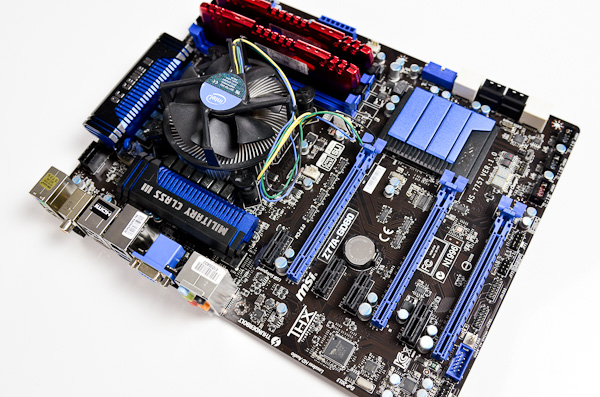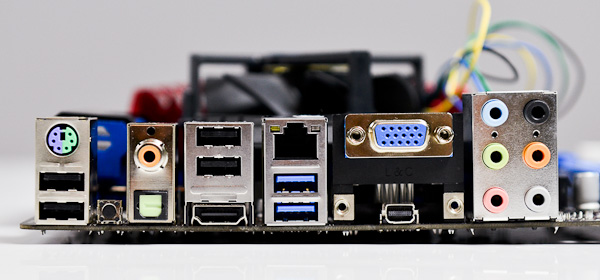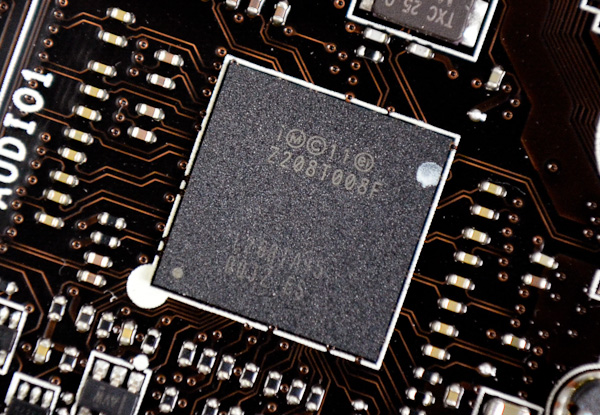A First Look at Thunderbolt on Windows with MSI's Z77A-GD80
by Anand Lal Shimpi on May 11, 2012 1:32 PM EST- Posted in
- Motherboards
- CPUs
- Intel
- MSI
- Thunderbolt
Update: Intel has informed us that we will see updated drivers for Windows certified Thunderbolt devices that will enable hot plugging under Windows as well as address some of the behavior we've seen. Intel further informed us that MSI's board has not yet made it through the certification process and a lot of these teething issues will hopefully be addressed by then.
I finally made the transition to a notebook as my desktop last year, a move many had made years prior. Quad-core mobile Sandy Bridge and good SSDs made the move simple for me, but Thunderbolt eventually made it near perfect. With only two drive bays in my notebook (I ditched my optical drive so I could have another SSD, something Brian Klug did back in 2010), there wasn't any room for good, high-performance, mass storage. Thunderbolt solved this problem for me.
Co-developed by Apple and Intel, Thunderbolt is a tunnel that carries both PCIe and DisplayPort traffic to the tune of 20Gbps per channel (10Gbps up and down). In the past, whenever you wanted to add a PCIe device (LAN, audio, high-speed storage, etc...) you needed to physically install that device in your system either via an ExpressCard slot on a notebook or via a PCIe slot on your desktop. Thunderbolt acts as a decoupler for PCIe devices, allowing you to put controllers that would traditionally lie inside your system outside of it, or even inside another device like a display. That's where the DisplayPort support comes in.
Apple's Thunderbolt Display is the perfect example of what Thunderbolt can be used to do. Take a DisplayPort panel, integrate Gigabit Ethernet, Firewire 800, audio and USB controllers and you've got Apple's Thunderbolt Display. In theory, you could connect a system that had none of these things, and the functionality would be provided exclusively by the display. Decoupling hardware like this allows OEMs to build thinner and/or smaller form factor machines (think Ultrabooks/MacBook Air), while allowing for full functionality when connected to a display. By carrying DisplayPort over the same cable, you can have a single cable that both extends functionality and connects your small form factor machine to a larger monitor. Thunderbolt enables the modern day dock for notebooks.
For all of last year, Thunderbolt was an Apple exclusive. This year, starting with the launch of Ivy Bridge, Thunderbolt is coming to PCs. We'll see it on notebooks as well as some desktop motherboards. Today we have the very first desktop motherboard with Thunderbolt support: MSI's Z77A-GD80.
Don't expect ubiquitous deployment of Thunderbolt, especially not on desktops, as the Thunderbolt controller and associated components add cost where margins are already very thin. Instead you can expect higher end motherboards to integrate it, or offer an add-in card of sorts which is the route ASUS is taking. I'd expect Ultrabooks to make better use of Thunderbolt naturally, but we will see it on desktops this year.
The Z77A-GD80 is a very full featured ATX Z77 motherboard. You get three physical PCIe x16 slots, although they are only supported in the following configurations:
| MSI Z77A-GD80 PCIe x16 Supported Configurations | ||||
| Ivy Bridge | Sandy Bridge | |||
| PCIe x16/0/0 | 1 x16 | 1 x16 | ||
| PCIe x8/8/0 | 2 x8 | 2 x8 | ||
| PCIe x8/4/4 | 1 x8 + 2 x4 | Not Supported | ||
Both CrossFire and SLI are supported.
You'll find a standard eight SATA ports on the motherboard (4 x 6Gbps, 4 x 3Gbps, 6 driven by Intel's controller). USB 3.0 comes native thanks to Intel's Z77 chipset, with two ports on the rear IO panel as well as a header and a supplied bracket for two more ports. Intel LAN comes standard as well. Audio is driven by a Realtek ALC898 controller, while VIA's VT6315N powers the on-board Firewire header.
The Star of the Show: Thunderbolt
The big news is of course the Thunderbolt port on the IO panel. Counting it, there are a total of three display outputs on the GD80, the other two are VGA and HDMI.
I believe the Thunderbolt controller on the GD80 is this little chip on the board, just behind the analog audio outputs on the IO panel. It also looks like the controller branches off of the Z77 PCH's PCIe 2.0 lanes. Although there are four PCIe x1 slots on the board, you can only use two at a time - likely because of the way the Thunderbolt controller connects to the system as it uses 4 of the 8 available PCIe 2.0 lanes. The remaining lanes aren't enough to support the on-board LAN, Firewire, audio and SATA controllers in addition to the extra PCIe slots and Thunderbolt. As a result there are limitations on what you can use in parallel (e.g. you can't use Firewire and SATA ports 7/8) in order to deal with the PCIe overprovisioning.
The markings on the Thunderbolt controller aren't familiar, so it could very well be that we're looking at Cactus Ridge - Intel's 2012 Thunderbolt controller we first heard about last year. Cactus Ridge doesn't change performance, it just helps reduce cost by integrating more functionality into the controller itself.
The beauty of Thunderbolt is it's near invisible to the OS. You don't need to install any drivers to take advantage of it, just plug your devices in and as long as your devices have driver support they'll just appear. The OS has no idea that your SATA, Ethernet or RAID controllers are sitting a few feet outside of your box, they all appear as normal PCIe devices.
As we found in our initial review of Thunderbolt on the MacBook Pro, Windows does not allow for the hot plugging of Thunderbolt devices. You can remove a Thunderbolt device once in Windows, but you cannot add a new one. Anything you want access to in Windows has to be plugged in at boot. OS X allows more flexibility in this regard as you can add/remove Thunderbolt storage and other devices while the OS is running, but even then it's not always well behaved. It's not all that uncommon to need a reboot after plugging in a chain of Thunderbolt devices under OS X, although admittedly Apple has been improving compatibility and behavior over time.
Update: Intel has informed us that we will see updated drivers for Windows certified Thunderbolt devices that will enable hot plugging under Windows. Intel further informed us that MSI's board has not yet made it through the certification process and a lot of these teething issues will hopefully be addressed by then.






















98 Comments
View All Comments
repoman27 - Monday, May 14, 2012 - link
This is a persistent misconception regarding Thunderbolt—that it would somehow be able to offer greater bandwidth if it had only used optical media.Light Peak was developed from the outset with a target link rate of 10 Gbps (and using conventional fiber optic technology, not silicon photonics.) While optical cables have much less of a problem with signal attenuation than copper, which makes them more efficient for longer runs, when it comes to distances of less than 10 ft, which are the norm for typical PC use cases, copper is currently much cheaper, more power efficient, and user friendly.
Look around any data center and you'll most likely see lots of direct attach twinax copper for short runs. The highest bandwidth optical interconnects I'm aware of are rated for 56 Gbps (4x 14 Gbps lanes, full-duplex), but you can buy 3.0 m passive copper cables that can do that as well and cost way less.
Since you'd need a PCIe 3.0 x8 connection to fill the largest pipes we currently have at our disposal, I don't think copper's ability to scale is a real issue yet.
yyrkoon - Monday, May 14, 2012 - link
I stand corrected. For some reason I was thinking the bandwidth provided for each PCIe lane was half of what is indicated in the charts you provided a link to.Sorry about that - everyone.
I do not think anyone here would like to see this come into fruition more than myself. Having been let down by the industry many times in the past however. I just do not think it will ever happen. So I suppose I tend to get worked up over it.
BrightCandle - Saturday, May 12, 2012 - link
What I really want to see is 300W capable external cases for GPUs that support thunderbolt. Then we can have laptops that can be connected to modern high end GPUs that can game well when connected up. It also really needs to be able to drive the laptops screen.JKflipflop98 - Sunday, May 13, 2012 - link
That would be cool. Maybe we'll start seeing monitors with built in video card expansion slots or something.RamarC - Friday, May 11, 2012 - link
VGA and a PS/2 mouse/keyboard connector on a mobo with Thunderbolt? echos of 1988 still resound in the most modern of hardware...hechacker1 - Friday, May 11, 2012 - link
PS/2 is still best for n-key rollover, and it's an interrupt device rather than polling.But vga, yeah, that seems like a waste of a port, it should be dvi and just include the dongle.
DerPuppy - Friday, May 11, 2012 - link
PS/2 keyboard connectors still have advantages over usb keyboard connections...vga is legacy though, no doubt
tjoynt - Friday, May 11, 2012 - link
For home computers ps2 and vga don't make sense anymore, but for businesses (especially data centers) ps2 and vga are critical. USB + DVI KVM switches for more than 4 computers get *very* expensive, while 16-32 port ps2+vga KVMs are rather inexpensive and rock solid reliable.Zoomer - Friday, May 11, 2012 - link
They could've included a DVI-I port and included a dongle, as some said. It's possible that the cost of utilizing the space freed up was too much; or there was a lack of suitable ports besides serial that are available to use that space.Exodite - Friday, May 11, 2012 - link
I suppose I'm the one that has to go against the grain here then but I'd consider VGA more useful than PS/2 as I still rely on a fair few projectors that use VGA.Granted, it's an old and dying standard but personally I'd find a lot more use for VGA than I would PS/2, Firewire or, uh, Thunderbolt really. :P